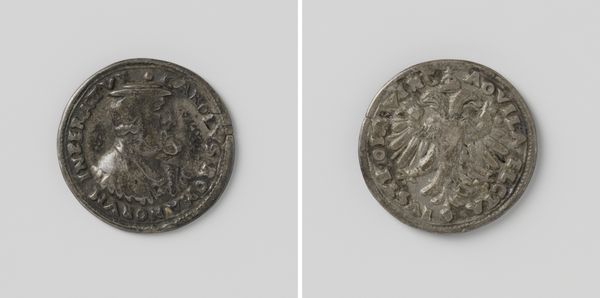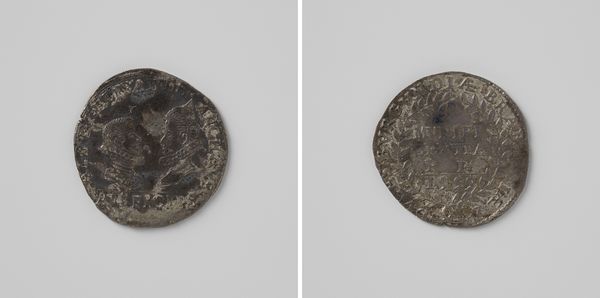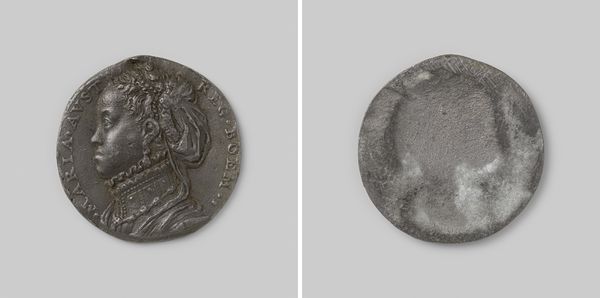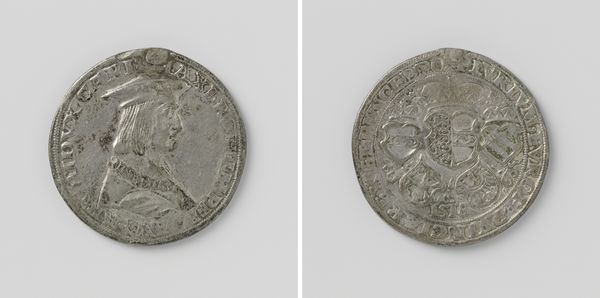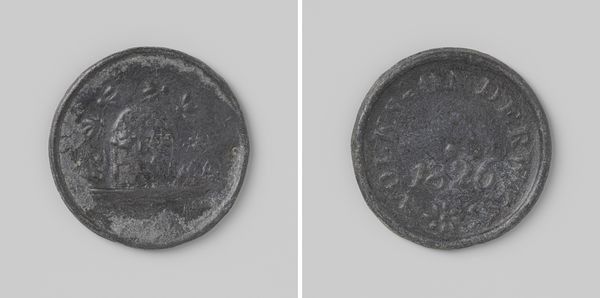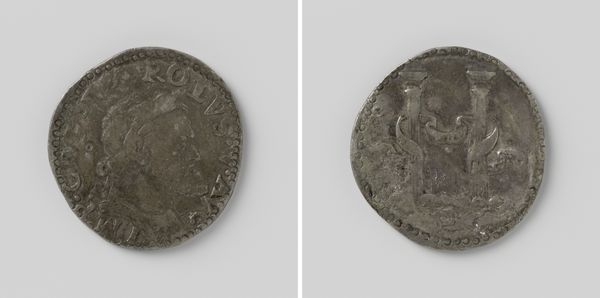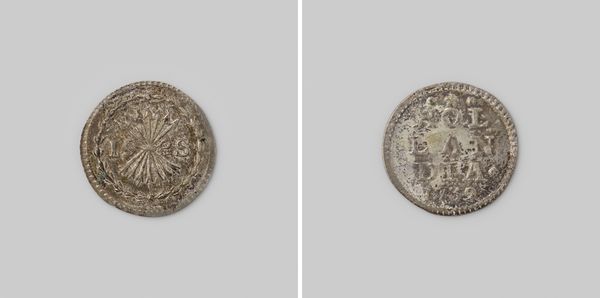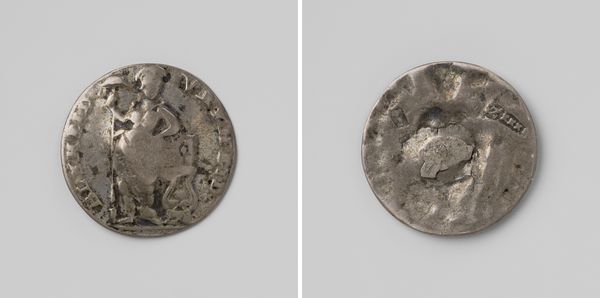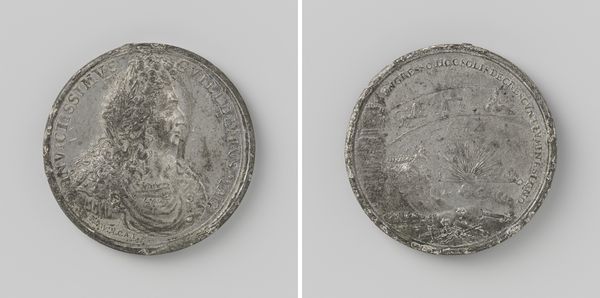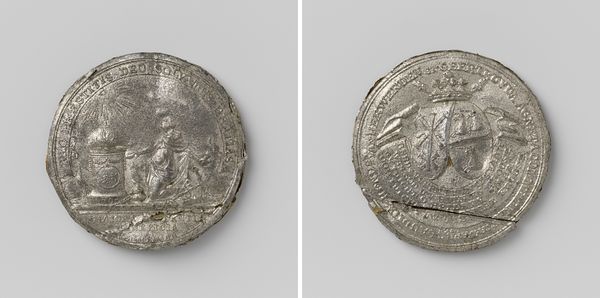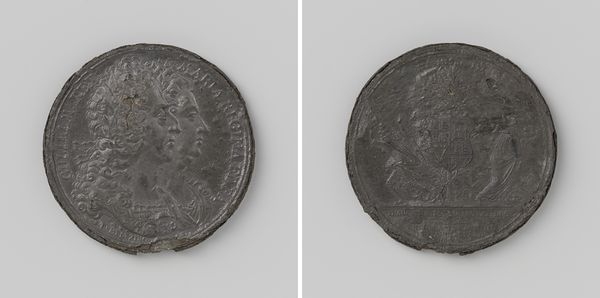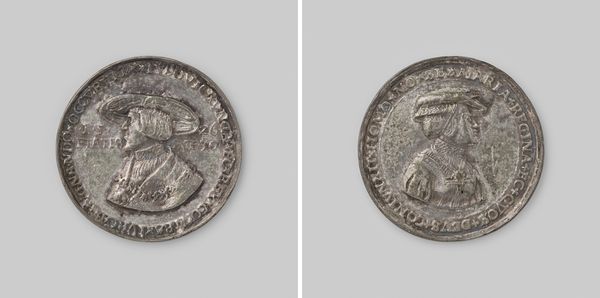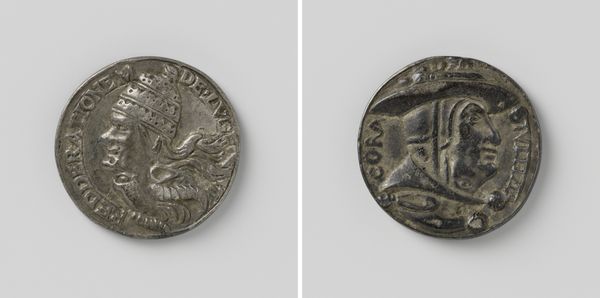
metal, relief, sculpture
#
portrait
#
metal
#
relief
#
11_renaissance
#
sculpture
#
history-painting
Dimensions: diameter 2.5 cm, weight 7.99 gr
Copyright: Rijks Museum: Open Domain
Editor: This is a metal relief from 1547, titled "Johan Frederik de Grootmoedige, keurvorst van Saksen," by Ludwig Neufahrer. It seems small and worn. What’s striking to me is how something so potentially grandiose feels so... modest. What do you see in this piece? Curator: I see a powerful example of how portraiture in the Renaissance served specific political functions. It’s not just about commemorating an individual, but about solidifying power and projecting an image of authority, even when that authority was contested. Editor: Contested? How so? Curator: Johan Frederik, or John Frederick as he’s sometimes known, was Elector of Saxony during a turbulent period marked by the Reformation. He was a staunch supporter of Martin Luther and played a significant role in the Schmalkaldic League, which opposed the Holy Roman Emperor Charles V. This resistance led to his defeat and imprisonment. The image of him, reproduced even after his loss, became a symbol of defiance and religious conviction against imperial power. How does seeing it this way affect your interpretation? Editor: It completely reframes it! Knowing the history, that “modesty” now reads as quiet resistance, even defiance. It’s not just a portrait, it's a political statement in miniature. Curator: Exactly. And remember that these types of portraits also functioned as propaganda. The image was meant to circulate and to reinforce John Frederick’s image as a righteous ruler, despite his military defeat. Metal was a relatively easily reproduced material too. Editor: So, it's both a historical document and a piece of strategic communication. I hadn’t thought about it that way at all. Thanks for opening my eyes! Curator: And thank you for engaging so thoughtfully! Considering the historical and political context truly allows us to engage in a deep, nuanced, and socially relevant appreciation of Renaissance portraiture.
Comments
No comments
Be the first to comment and join the conversation on the ultimate creative platform.
